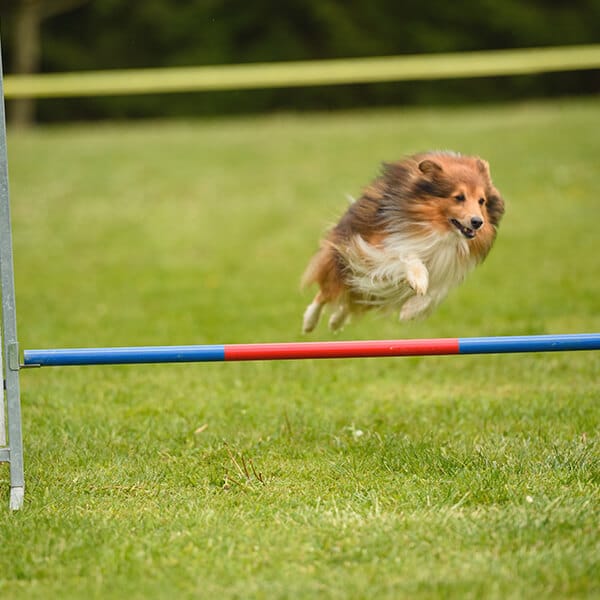Sheltie Food and Health
Shelties are between 13 and 16 inches tall and generally weigh anywhere from 11 to 24 pounds. They are extremely bright and energetic and they will need plenty of exercise. That also means that they will need plenty of calories in order to make up for the energy that they expand. These are working dogs, so they are used to being active for the majority of the day. This makes their caloric requirements a little higher than some of the other breeds out there. Your dog should be getting at least an hour of exercise a day from you, but some people actually get Shetland Sheepdogs in order to work them on a farm, ranch, or in other capacities. If that is the case, then they are going to need more calories than what is recommended for nonworking dogs.
You also want to keep in mind that growing young adults and puppies need more calories than their adult counterparts. They use a lot of energy. But no matter what age your Sheltie is, they are going to need a diet that consists primarily of protein. You want your dog to be getting good quality protein that makes up somewhere between 20 percent and 25 percent of their diet. You also want to follow the recommended calories listed by the Council of the National Academies. They recommend a daily caloric intake of 660 calories for Shelties weighing 15 to 20 pounds. This may be more or less depending on your dog’s activity level.
You also want to make sure that these dogs are getting all of the nutrients that they need. If you buy premium dog food, then you should have no trouble getting your dog all of the nutrients that they require because it will already be included in the dog food. There are so many vitamins and minerals out there that dogs need, it can be difficult to calculate them yourself anyway. If your dog is eight years old or older, then you may want to make sure that your dog food has glucosamine and chondroitin because it can be really good for the immune system and joints in older dogs.
There are health problems that you want to be aware of when it comes to Shelties. First of all, this breed can suffer from eye problems. They can suffer from two particular eye conditions which include collie eye anomaly or CEA and progressive retinal atrophy or PRA. They also have a genetic mutation which makes them susceptible to certain drugs. Some of those drugs are found in the heartworm medications that you may opt to use. That’s why if you are planning on giving your dog any medication at all you want to consult with your veterinarian first. Some of the other common health problems include epilepsy, skin allergies, hip dysplasia, hypothyroidism, and bladder cancer.
Many pet owners choose to go with pet health insurance for this reason. There are many different conditions that your Sheltie can suffer from, and having pet insurance is one of the best defenses against these particular conditions. The nice thing about pet insurance is that you are able to choose exactly what you want to protect your pet from. For example, you can go with comprehensive insurance that covers every conceivable health problem your Sheltie can have, or you can choose to get insurance to protect them against the most common health issues or against accidents in general. Whatever you choose, having dog insurance is terrific peace of mind.

